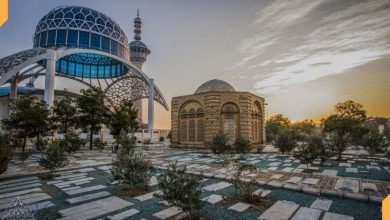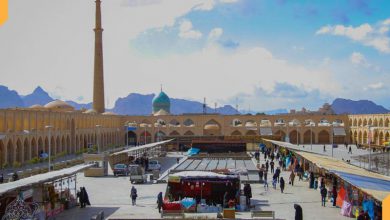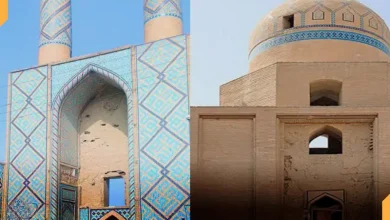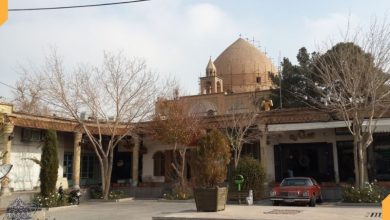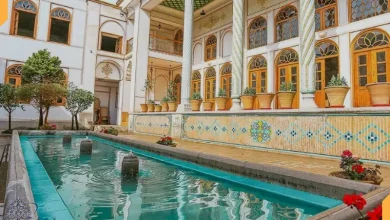Dar al- Ziafe Minarets

Isfahan can be considered as one of the authentic cities of Iran for observing the architecture after Islam.
This city has placed many magnificent and eye-catching buildings in itself; valuable works that today, transform it into one of the best internal tourist destinations.
Among these works we can refer to the Dar al- Ziafe Minaret.
The antiquity of these minarets returns to the 8th century A.H and are still alive in the centre of Isfahan city. In this article, we are going to read more about Dar al- Ziafe Minaret; tune on.
What is the meaning of word “Minaret”?
“Minaret” means a sign that is being stood up in the way, which is built from stone and brick and also uses as the base light.
In the past, a light was being turned on for the guidance of passengers on the minaret. Also, the minaret was used as a place for calling to prayer. It was considered as a sign for victory.
Where are the Dar al- Ziafe Minarets?
If we visit Isfahan, we’ll see many minarets throughout the city that gave a unique grace to the architecture of buildings and also added to its beauty.
Dar al- Ziafe Minarets are considered the spectacular places of Isfahan. The history of the construction of Dar al- Ziafe Minarets is attributed to the 8th century A.H. This work is registered as the national work in the twelfth of Esfand, 1316.
Dar al- Ziafe Minarets are located at the Ebn-e Sina crossway, in Kamal Street. For accessibility to it, you can use public transportations or your personal car.
The nearest subway station to this place is the station of Shohada Square that has about 4 km distance from it and you should take the remained pass by taxi or by walking.
The short history of Dar al- Ziafe Minaret
According to the decorations and the architectural style, the antiquity of Dar al- Ziafe Minarets returns to the Ilkhanid period.
Some also believe that the minarets have been related to the period of King Sanjar Seljuk; but because the inscriptions of minarets are destroyed due to the passing of time and erosion, they don’t show the exact date of the construction of minarets.
The architectural study of minarets and their decorations show that the minarets are related to the Ilhkanid period.
Some believe that the Dar al- Ziafe Minarets remain from a mansion that was gradually ruined.
The word “Dar al- Ziafe” is evoking a place for party or reception in the mind; so it can be said that this mansion was a guest-house that perhaps had a mosque beside itself.
The mansion and mosque are gradually destroyed and minarets remain.
Some believe that this place was famous with the name of “Dar al- Ziya” and the minarets were used for the guidance of passengers.
That way, a fire was lit on the top of the minarets to be seen from a distance. Some others know the founder of minarets a person named “Ziya” and the name of minarets are taken from him.
The architecture of Dar al- Ziafe Minarets
Apparently, the minarets are considered weak and low-balanced constructions, but in reality, they are so stable and durable.
The durability of minarets returns to this point that they are not roofed; so that the rainfall doesn’t have any effect on them and the erosion happens later in them. Dar al- Ziafe Minarets are not separated from these characteristics.
All these minarets are formed from four main parts, named base, stalk, cover and head. Apparently, from bottom to top, the minaret has a stalk and in the above, has a ring as a chokepoint.
On the top of a chokepoint, there is a part with the shape of an umbrella that is called “Saucer” and in the highest part of the minaret, there is a part named “crown.”
Above the facade, there are two beautiful, circular and brick-made finials that are decorated with stalactite vaulting and coloured mosaic tiles and have a cover of turquoise tiles in the checkered and brick texture.
The height of these minarets is 38 meters and is built on octagonal bases.
The stalactite vaulting inscription on top of minarets is written with Sols script, but there is nothing remaining from it and only a part of a verse is being seen this matter highlights the theory that says the minaret was a mosque one day.
Visit from Dar al- Ziafe Minarets
You can visit Dar al- Ziafe Minarets at any hour of the day. Visit from Dar al- Ziafe Minaret is free. Surely, in the day you can observe more details and also take a variety of photos.
At the night, with the lighting, the Dar al- Ziafe Minarets take on a different effect.
FAQ
1. Which period does the construction of Dar al- Ziafe Minarets returns to?
Ilkhanid period
2. What is reason of high durability of minarets?
It returns to not covering of them.
3. What was the usage of minarets in the past?
For the guidance of passengers.
Conclusion
With a look at the Islamic architecture history in Iran, we recognize that the antiquity of most of the minarets in Iran, especially in the Isfahan province, returns to Seljuk and Safavid period; because this city in the mentioned periods was of great importance as a capital and also had passed the peak of its architecture in these eras.
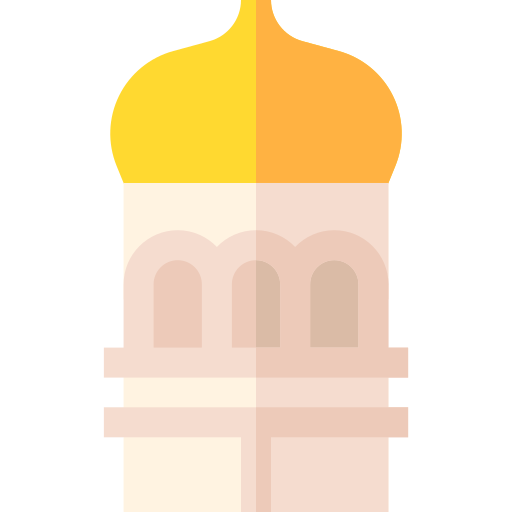 Did you ever visit Dar al- Ziafe Minaret? At day or night? Which characteristic of it absorbed you? Did you take some photos there? Share your experiences and views with us…
Did you ever visit Dar al- Ziafe Minaret? At day or night? Which characteristic of it absorbed you? Did you take some photos there? Share your experiences and views with us…

